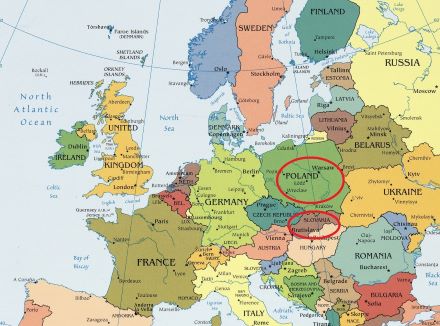
Wroclaw – Opole – Gliwice – Oswiecim – Krakow (Poland) – Trstena – Zilina – Trencin – Trnava – Bratislava (Slovakia)
755 km cycled
Once Covid had lost its deadly sting and travel had become more predictable again, we decided to reintroduce surprise trips. It was Kurt’s turn to plan and Darina’s wish was to go camping. In theory, April weather would suit.
As Easter drew closer, Kurt’s clues were ravioli and north. Now, ravioli exists in countless forms with different names and fillings all over Europe, and even Malta would be big enough to include a northern loop. But then again, all our recent trips led us to Southern Europe, so north could actually mean north!

Simple Train, a Swiss company specialized in international train travel organised the tickets that brought us on a 14-hour journey via Munich and Berlin in Germany to Wroclaw in Poland.
Even though the weather didn’t encourage camping, Darina’s admission that Wroclaw was on her to-do list cheered Kurt up no end. As a by the way, it also featured in one of the virtual tour trips where Darina prepared pierogi (Polish ravioli) as a clue for Kurt.


Wroclav became part of Poland after WWII when the whole county shifted west and a lot of people from the former Polish city of Lwiv moved in. This would partially explain the numerous Ukrainian flags in town, although they were flying all over the country. Poland is extremely supportive of the Ukraine and is hosting thousands of refugees, not only because of a common enemy.
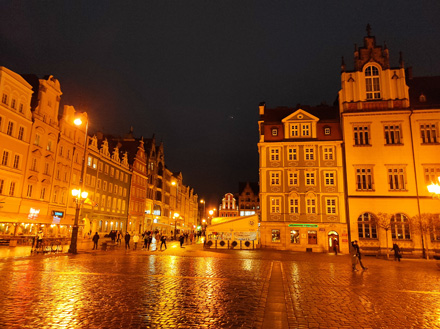
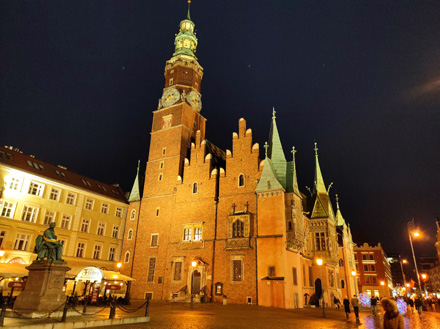
Most of the old town was reconstructed in style after the war. It has the second biggest medieval market square (after Krakow), but what tickled our fancy were the hundreds of dwarf sculptures all over town, commemorating the anti-Soviet movement that brought down the communist regime in the 1980s.
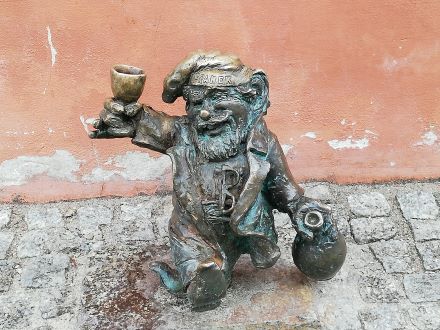

Another quirky reference to the past is the fact that everyday at dusk and dawn the street gas lamps around the cathedral are lit and extinguished by one of three official human gas lighters. It brought back memories of a lesson Darina had on teaching practice thirty years ago: an Irish lesson on Mairtín Ó Direáin’s poem Fear Lasta Lampaí. Even back in 1928 when O’Direáin wrote the poem, he was highlighting the tension between modernisation and tradition in his depiction of a little ugly man being the source of ridicule by the local mob as he went around lighting the gas lamps in the city of Galway. The magic of bringing light to the town, as depicted by O’Direáin, is something we can still experience 365 days a year in Wroclaw.
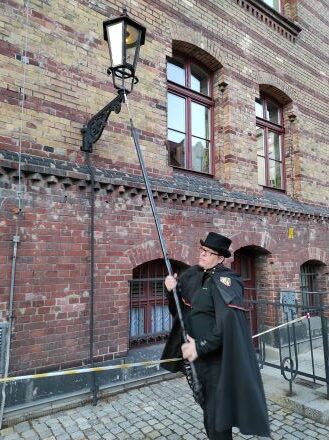
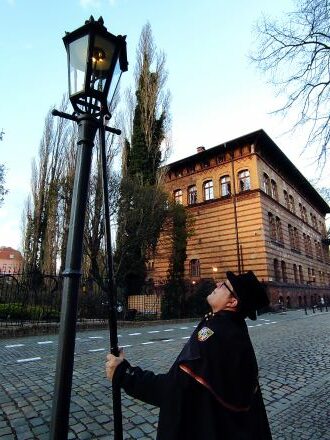
Cycling out of town was no problem as the cycle lanes were plentiful and well organised. The landscape was very flat, leaving a lot of visual space for the everchanging sky and the towns and cities en route all had a cute historical centre.

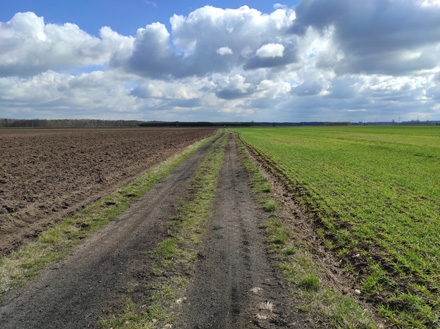
There’s something very relaxing about cycling on dedicated bike routes following canals, in forests or on sandy tractor paths through fields. The routes are well signposted and wildlife of the feathered kind is plentiful: storks, pheasants, guinea fowl, ducks and geese.
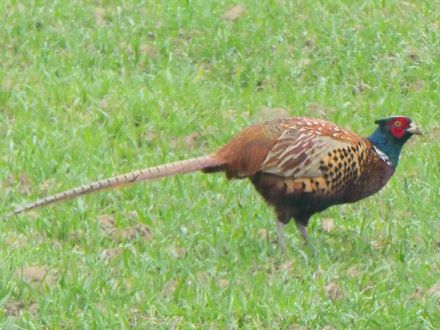

We did cycle through part of the coal mining and steelwork area, and like the German counterpart in the Ruhrgebiet, it is all spruced up, very green and there was no soot in the air. In Bierun, we passed the Piast coal mine, which produces 5 million tonnes of coal per year and is famous because of the coal miners’ strike there over Christmas 1981. 1,000 miners were involved in a two-week protest fighting for better working conditions and it turned out to be the longest underground strike in Poland since World War ll.

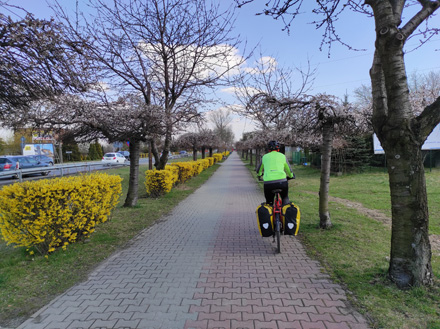
Oswiecim, better known as Auschwitz, is a place that touches everyone’s heart. To see the atrocities mankind is capable of is simply horrifying. The piles and piles of shoes alone that were worn by the victims gives a minute idea of the scale this disturbing genocide. A visit to the Auschwitz Nazi Concentration Camp is a sobering sombre affair that everyone should experience to learn about the lives of thousands who didn’t live happily ever after.


Krakow was well worth a rest day. Actually, the old town and the Jewish quarter could keep you busy for a few days. While Wroclaw has it’s gas lighters, Krakow has three trumpeters hired to mark the hour 24/7 from St Mary’s church clock tower on the main square. They then stick their head out the window to salute the onlookers way down on the plaza below!
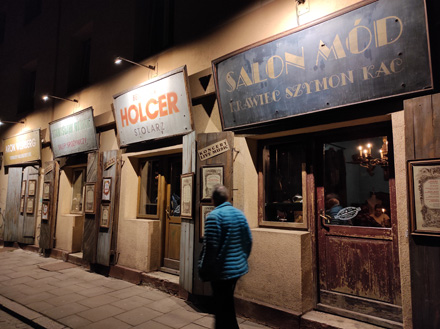
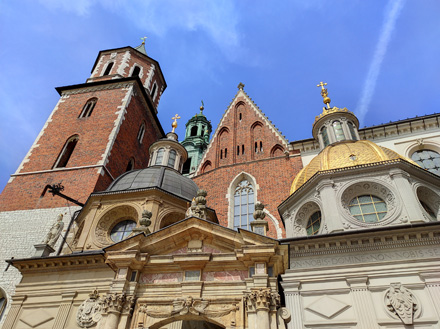
In the Middle Ages, Krakow was a proper trading centre between the East and the West. Spices and silk were traded for local textiles and salt in what was known as the Cloth Hall, a beautiful Renaissance building in the main square now listed as a UNESCO World Heritage site.
The former Pope, John Paul II, hailed from a village just outside Krakow and he resided in the Bishop’s Palace from 1958-1978 before moving to the Vatican. On official visits to Krakow, he stayed at the Palace and was known to appear at the window above the entrance to address his followers below. This is now marked with a beautiful mosaic of the man himself.
While we didn’t stay at the palace ourselves, we can highly recommend the Boutique Aparthotel, not least because of the warm welcome and excellent hospitality supplied by Mohammed. Shukran Mohammed!
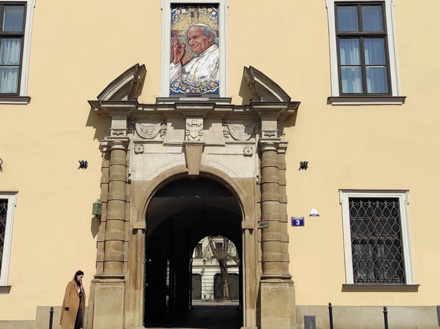
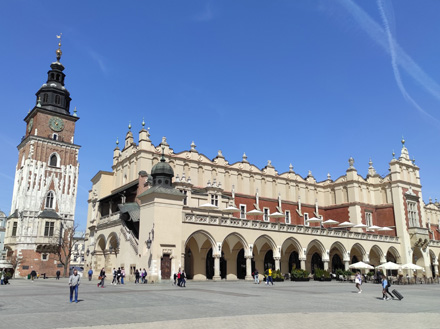

After touring this beautiful town on foot in the warmest day of the trip, the heavens opened, and the temperatures dropped. Easter weekend was going to be a washout. We left a freshly washed old town on excellent bike lanes and purpose-built bridges in the direction of the Tatra Mountains.
Not only was it a washout, but every shop, kiosk and restaurant in the vicinity was closed. Easter in Poland is apparently as “big” as Christmas. We climbed in a rain cloud with rumbling tummies hoping for more luck on the Slovakian side of the border. Firemen sporting golden helmets paraded in and out of crowded churches, where they stood to attention on the alter as the Passion of Christ was read. Then on the crucifixion cue they fainted dramatically just like the soldiers did in Calvary some 2,000 years ago. Of course, we can understand the shop assistants and chefs that don’t want to miss out on a bit of a resurrection. 😉


Short before the border, we finally got food at a petrol pump and left Poland happy. As the Spanish would say: Barriga llena, corazón contento! Full stomach, happy heart!
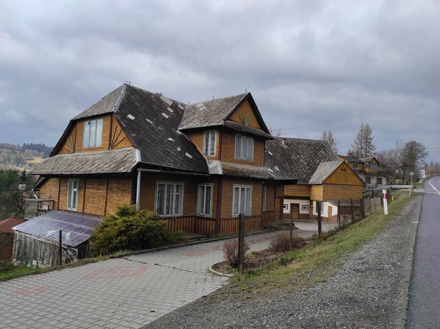
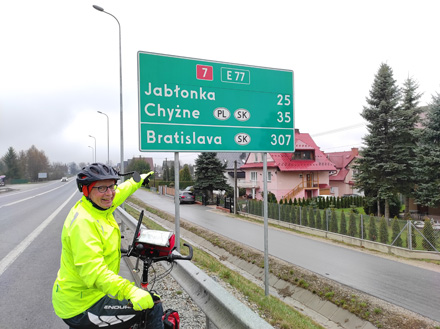

We did hope for a bit of scenery, after all we were in the Tatra Mountain region. Alas, it was restricted to glimpses of snowy mountains with all the higher peaks in clouds. So, we concentrated on traditional villages and castles. And one definitely worth a visit is Orava Castle, perched high on a rock outcrop close to Dolny Kubin. Controlling the Orava valley from its perch, it has beautifully furnished rooms and a fine collection of exhibits including a calf with two heads!
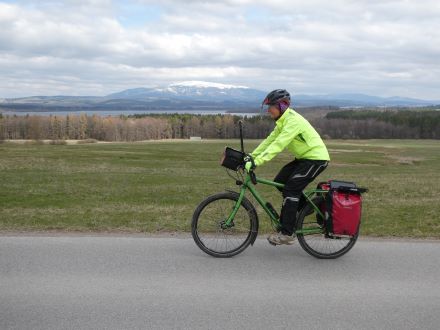
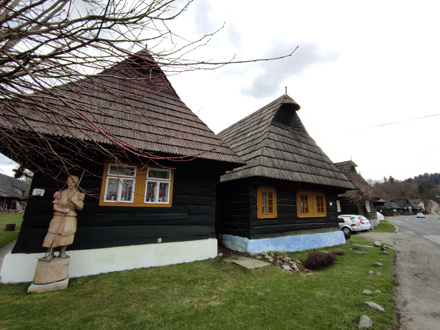

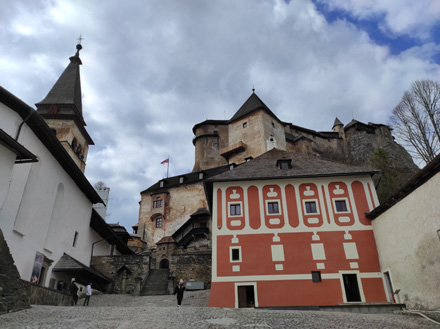
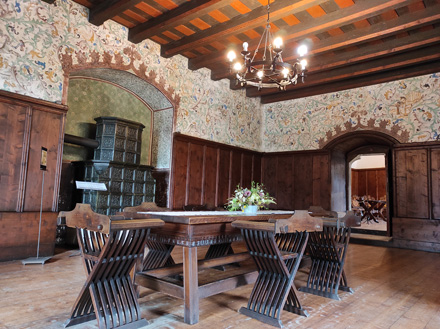
We can’t recommend taking the main road (E50) to Strecno. There’s far too much traffic on a road that’s too narrow to deal with it. Add a snowstorm and Easter Monday traffic and it’s really not a cycling paradise anymore! There is an alternative north of it (Route 583) that would be the better option.
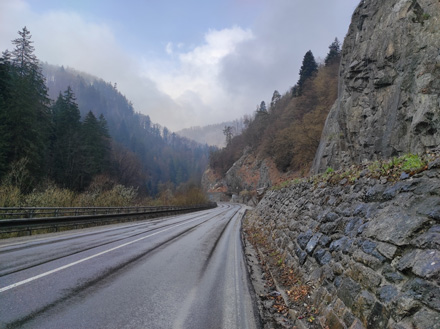


In Slovakia (and Poland) on Easter Monday there is an unusual courting tradition that is continued to today. The boys go to the house of the girl they fancy, flog her with a willow whip and then douse her with ice-cold water before asking her parents for a tip! They are rewarded with a shot of vodka and are invited in for some food while their whip is decorated with a coloured ribbon. Darina has no doubt that the tradition is taken seriously right into adulthood as every driver that drowned her with the floods on Easter Monday seemed to do so with great glee! What ever happened to women’s lib in this part of the world?
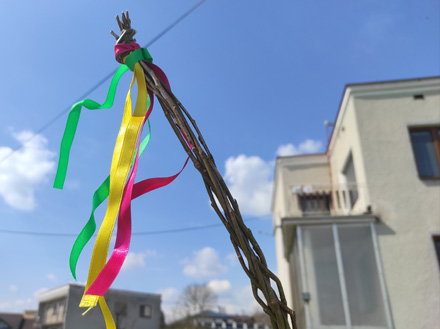

From Strecno, we had excellent bike routes and quiet roads along the Vah River/Canal. Towns like Zilina, Trencin, Piestany and Trnava were delightful stations and Bratislava had its own charms too.

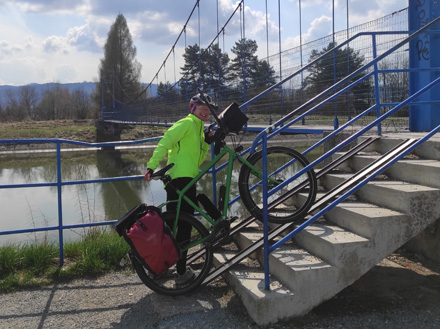

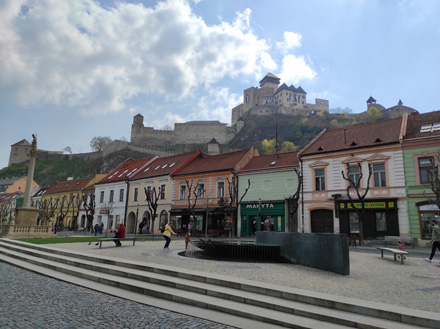

Bratislava is an unassuming capital with a small Medieval Old Town overlooked by a castle with beautiful manicured gardens. Across the River Danube there is a string of Soviet blocks known as Lego City!
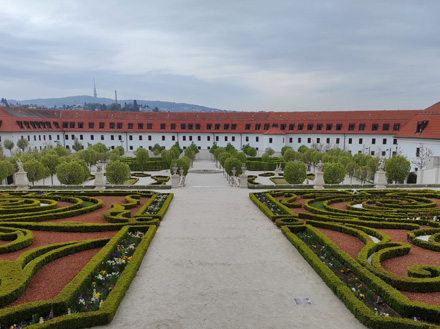
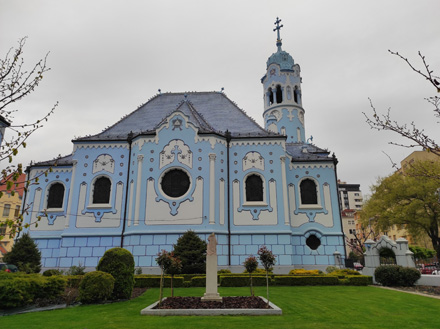

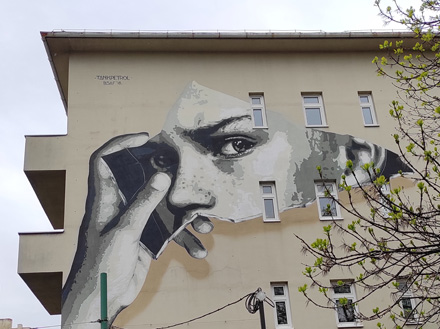

April is a gamble in this neck of the woods. We didn’t camp once and had to wear our raingear almost every day. However, we made the most of it, enjoyed the local cuisine (not only Ravioli 😉) and Kurt was very happy with the available brews. We found the Poles to be quite reserved but had many very pleasant encounters with the helpful locals in Slovakia.

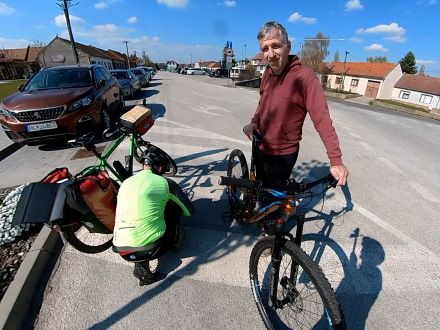
Hearty dishes served in hungry-cyclist portion sizes are the order of the day. Fuel is the name of the game here! There are all sorts of ravioli, dumplings and soups, while meat, beetroot and cabbage were common dominators across the board. A typical Polish saying goes: Eat, drink and loosen your belt! This would also be appropriate in Slovakia!


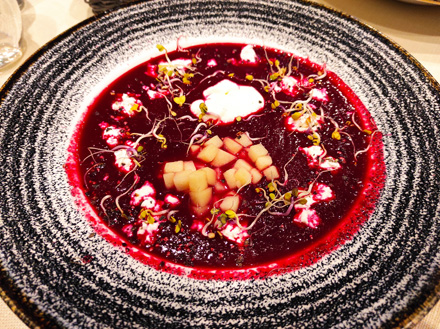


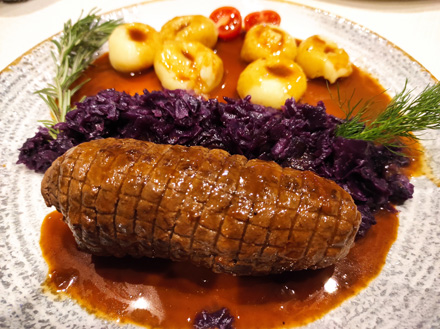
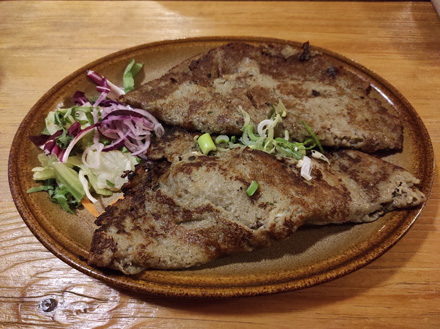
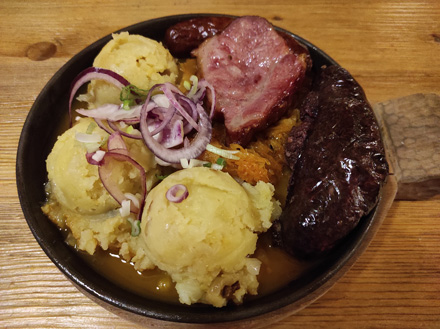
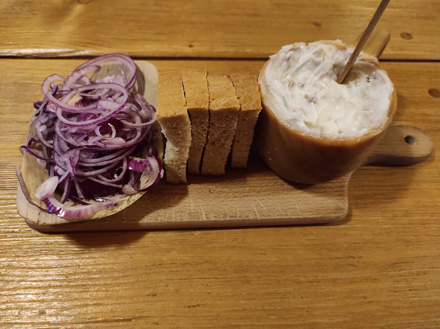

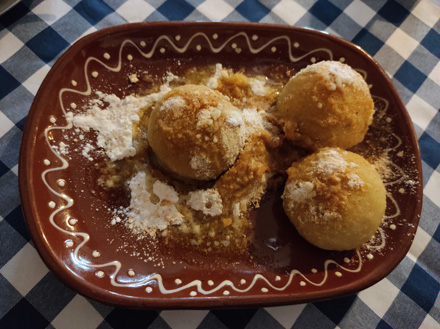


Bicycle infrastructure is fabulous, and drivers are respectful and patient, especially in Poland. If you have plans to visit, perhaps do so a bit later in the year. And be sure to check out the delicious northern ravioli: Pierogi!


